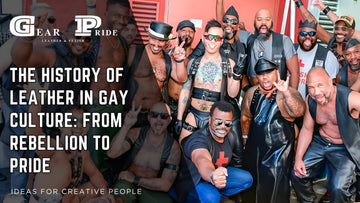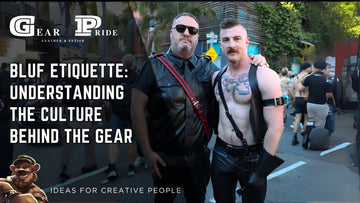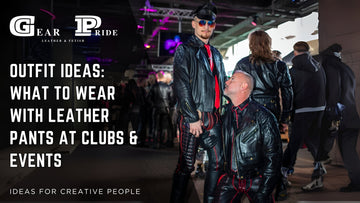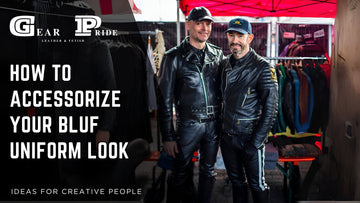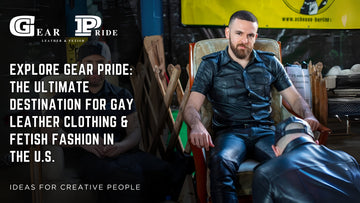The History of Leather in Gay Culture: From Rebellion to Pride and Identity
Leather has long played a significant and symbolic role in gay culture, evolving from an underground sign of rebellion to a proud emblem of identity and empowerment. At Gear Pride, we celebrate this rich history and its continued significance at pride events, fetish gatherings, and everyday expressions of self-identity.
Origins: Leather as Rebellion
The roots of leather within gay culture trace back to the post-World War II era, when returning soldiers brought military and biker aesthetics into gay circles. Initially, leather clothing symbolized rebellion, masculinity, and nonconformity, creating distinct subcultures that embraced bold expressions of sexuality and identity.
Emergence of the Leather Scene
In the 1950s and 60s, leather bars and clubs began emerging in major urban centers like San Francisco, New York, and Los Angeles. These venues provided safe spaces for gay men to connect, fostering a growing sense of community among individuals who celebrated masculinity, sexuality, and leather attire openly.
Influence of Motorcycle Clubs
Motorcycle clubs significantly shaped gay leather culture, notably the formation of pioneering groups such as the Satyrs Motorcycle Club in 1954. These clubs reinforced leather as a powerful statement of camaraderie, freedom, and masculine identity, laying the groundwork for modern leather communities.
Leather Culture in Activism
Throughout the 1970s and 80s, gay leather communities actively participated in civil rights and LGBTQIA+ activism. Leather became both a rallying symbol and a visible emblem of strength and resilience during critical moments such as the Stonewall riots and subsequent gay rights movements.
Leather Pride Flag
The introduction of the Leather Pride Flag in 1989 by Tony DeBlase further cemented leather's place within gay identity. The flag, now a universally recognized symbol, represents inclusivity, pride, and the shared experiences of leather enthusiasts worldwide.
Modern Gay Leather Culture
Today, leather attire is widely celebrated at pride festivals, fetish parties, and specialized events like Folsom Street Fair and International Mr. Leather. The contemporary gay leather scene values inclusivity, self-expression, and diversity, expanding beyond traditional boundaries and encouraging new generations to explore their identities through leather.
Leather Fashion Evolution
Over time, leather fashion has diversified significantly. From traditional biker jackets and harnesses to modern, stylish leatherwear that blends seamlessly with contemporary fashion, Gear Pride offers an extensive collection that respects tradition while embracing modern tastes and trends.
Leather and Identity
Leather remains a powerful means of expressing personal identity, confidence, and pride. For many gay men, wearing leather clothing is more than fashion—it's a visible affirmation of identity, strength, community belonging, and authenticity.
Conclusion
The history of leather in gay culture illustrates a profound journey from rebellion and secrecy to pride, visibility, and empowerment. Leather's evolution continues, fueled by pride, self-expression, and community solidarity. Gear Pride is honored to contribute to this ongoing legacy, providing premium leatherwear that enables you to express your identity with pride and confidence.
Celebrate your leather heritage—explore Gear Pride’s premium collection today!
